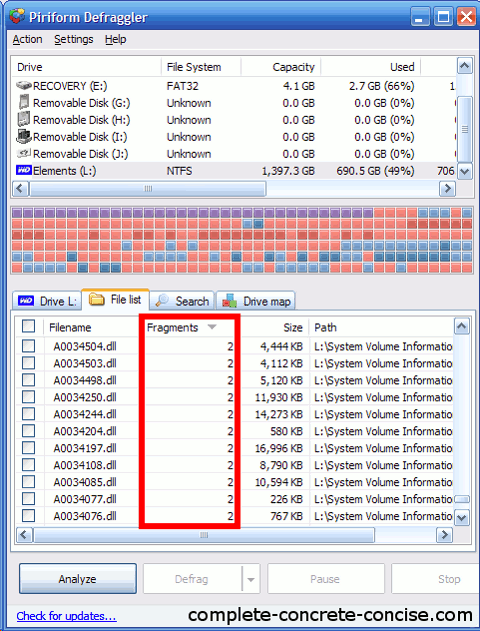

How Do I Bypass Keyloggers? The Guaranteed Way to Avoid Having Your Keystrokes Maliciously Recorded - I hear about techniques to bypass keyloggers often. I discuss what that means, and why many passionate proponents and opponents of various platforms make me sad. I think that's a pretty useful thing to be. What It Means to be “Platform Agnostic” - I describe myself as being "platform agnostic".

How Do I Remove Myself from a Machine? - Although there's no way to remove all traces of yourself from a machine, there certainly are ways to remove as much as you can. In fact Windows 7 and better will do it automatically for you, once a week. My recommendation is to simply do the normal defrag “every so often”. Jumping through these extra hoops to get the system files defragged is typically just not worth it, unless you’ve determined that these files are severely fragmented. My question to you is a simple one: why bother?ĭefragging the files you can defrag easily, and doing so regularly, gets you 99% of the performance gain you’re looking for anyway. It can schedule a defrag of the system files on your next boot, before the system is actually running.
#PIRIFORM DEFRAGGLER DEFRAG ABORTED 67% FREE#
The folks out at have a free utility, PageDefrag for just this purpose.
#PIRIFORM DEFRAGGLER DEFRAG ABORTED 67% WINDOWS#
One very common example is windows paging or swap file. The next problem is that the operating system itself, as part of its normal workings, often has files open in such a way that those files cannot be defragged. If you can, you can then close the program that has the file open, and try defragging again. This article: How can I find out who is using a “file in use”? explains how. One of the things you can do when you run into this situation is to look at the list of files that were not defragged and see if they are in use. That’s why most defragging utilities suggest you close down all running programs prior to attempting to defrag. The second most common cause is that the file is in use by some program. The most common reason files do not get successfully defragged is simply that there’s not enough free space on the hard disk to do so. If there’s not enough room for a second, temporary, copy of a file that needs to be defragmented, then that file cannot be processed. No, that’s not technically necessary, but it makes the defragmenting tool significantly simpler, faster and otherwise more reliable.Īs a result, many, if not most defragmenting tools just require some fairly random percentage of free space, like 10% or 15%. There are several technical approaches to defragging, but most require that you have enough free space on your hard disk for a copy of the largest file that needs defragging. The “problem” that defragging solves is simply that when all those pieces are next to each other and in order, the hard disk has to do a lot less work to access the file. Let’s look at some of the reasons, and some of the ways to force the issue if you still feel you need to.ĭefragging, or more properly, defragmenting, is the process of taking all the parts or “fragments” of a file on your hard disk and making sure that they are physically next to each other, and in order.įiles don’t need to be that way: the first part of your file could be on the outer rim of the hard disk, the next part somewhere on the inner portion, and other parts scattered everywhere in between. Chances are it won’t impact performance in any noticeable way, and that’s really what defragging is all about: improving performance. It’s not at all uncommon to have some files that refuse to defrag, and that’s quite alright. Actually, this is not necessarily a problem.


 0 kommentar(er)
0 kommentar(er)
